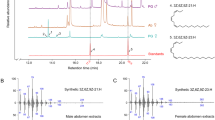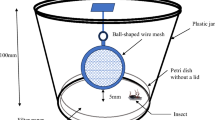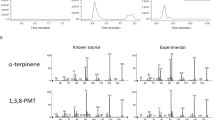Abstract
ATTEMPTS to identify a sex attractant substance in tsetse flies have failed because there seems to be no olfactory agent for sex recognition1,2. Males are apparently sexually activated only by movement of the female, but the adverse effects of naturally occurring low population densities3 on mating frequency is overcome as both sexes encounter one another at relatively high density around host animals1. Experience in the laboratory confirms that sexual arousal in male tsetse flies, Glossina morsitans morsitans (Westwood), is initiated by movement of other individuals. Thus, mature adult males will initiate sexual behaviour in the absence of females and the level of activity is increased if the flies are disturbed. This behaviour ceases, however, as soon as physical contact is made with the target male. It seems unlikely that a sexually aggressive male would rely on rejection or acceptance by its target in order to distinguish females of its own species, and in view of the discovery of a short range sex pheromone in the housefly Musca domestica L.4–7, an attempt has been made to demonstrate the existence of a positive sex recognition pheromone in G. morsitans.
Similar content being viewed by others
References
Dean, G. J. W., Clements, S. A., and Paget, J., Bull. ent. Res., 59, 355 (1969).
Turner, D. A., Bull. ent. Res., 61, 75 (1971).
Glasgow, J. P., The Distribution and Abundance of Tsetse (Pergamon, Oxford, 1963).
Silhacek, D. L., Mayer, M. S., Carlson, D. A., and James, J. D., J. Insect Physiol., 18, 43 (1972).
Silhacek, D. L., Carlson, D. A., Mayer, M. S., and James, J. D., J. Insect Physiol., 18, 347 (1972).
Carlson, D. A., Mayer, M. S., Silhacek, D. L., James, J. D., Beroza, M., and Bierl, B. A., Science, 174, 76 (1971).
Rogoff, W. M., Gretz, G. H., Jacobson, M., and Beroza, M., Ann. ent. Soc. Am., 66, 739 (1973).
Rogoff, W. M., Beltz, A. O., Johnson, J. O., and Plapp, F. W., J. Insect Physiol., 10, 239 (1964).
Beroza, M., Bierl, B. A., Tardif, J. G. R., Cook, D. A., and Paszek, E. C., J. econ. Ent., 64, 1499 (1971).
Louloudes, S. J., Chambers, D. L., Moyer, D. B., and Starkey, J. H., III, Ann. ent. Soc. Am., 55, 442 (1962).
Author information
Authors and Affiliations
Rights and permissions
About this article
Cite this article
LANGLEY, P., PIMLEY, R. & CARLSON, D. Sex recognition pheromone in tsetse fly Glossina morsitans. Nature 254, 51–53 (1975). https://doi.org/10.1038/254051a0
Received:
Issue Date:
DOI: https://doi.org/10.1038/254051a0
- Springer Nature Limited
This article is cited by
-
Effect of antibiotic treatment and gamma-irradiation on cuticular hydrocarbon profiles and mate choice in tsetse flies (Glossina m. morsitans)
BMC Microbiology (2018)
-
10.1007/BF00414503
CrossRef Listing of Deleted DOIs (2011)
-
Sex pheromone activity in a single component of tergal gland extract ofLutzomyia longipalpis (Diptera: Psychodidae) from Jacobina, Northeastern Brazil
Journal of Chemical Ecology (1994)
-
Role of the male claw sensilla in perception of female mounting sex pheromone in Dermacentor variabilis, Dermacentor andersoni and Amblyomma americanum
Experimental and Applied Acarology (1993)
-
Chemical basis for asymmetric mating isolation between strains of screwworm fly,Cochliomyia hominivorax
Journal of Chemical Ecology (1987)





